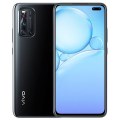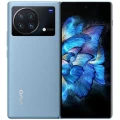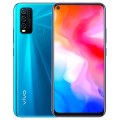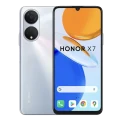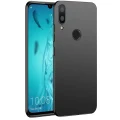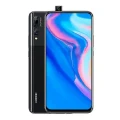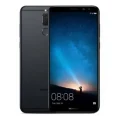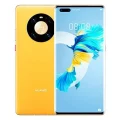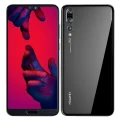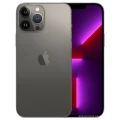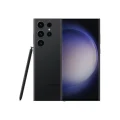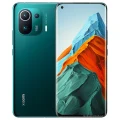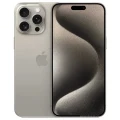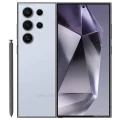Vivo V9
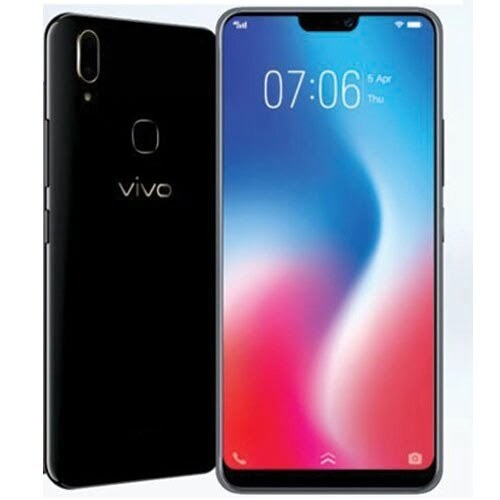


Vivo V9 Price in Bangladesh
The price of the Vivo V9 is BDT 26,990. The smartphone features a 6.3-inch IPS LCD capacitive touchscreen with a resolution that provides an impressive ~85.2% screen-to-body ratio. It is powered by a 2.2 GHz Octa-core Qualcomm MSM8953-Pro Snapdragon 626 processor and comes with 4 GB of RAM and 64 GB of internal storage, expandable up to 256 GB via a microSD card. The camera setup includes a 16 MP and 5 MP dual rear camera, along with a 24 MP front camera for high-quality selfies. The device is backed by a standard 3260 mAh Li-Ion battery.
Specifications
General
| Model | Vivo V9 |
| Announced | 2018, March |
| Released | 2018, April |
| Status | Available |
Design
| Dimensions | 154.8 x 75.1 x 7.9 mm (6.09 x 2.96 x 0.31 in) |
| Weight | 150 g (5.29 oz) |
| Colors |
Gold, Black, Sapphire Blue |
Network
| Technology | GSM / HSPA / LTE |
| 2G Network |
GSM 850 / 900 / 1800 / 1900 - SIM 1 & SIM 2 |
| 3G Network |
HSDPA 850 / 900 / 1900 / 2100 |
| 4G Network |
LTE band 1(2100), 3(1800), 5(850), 8(900), 38(2600), 40(2300), 41(2500) |
| GPRS <strong>GPRS</strong> (General Packet Radio Service) is a packet oriented mobile data service on the 2G and 3G cellular communication system's global system for mobile communications (GSM), Generally, GPRS is used for the purpose of wireless data transfer, such as sharing pictures and videos or browsing the Internet via a mobile phone connection. | |
| EDGE <strong>EDGE</strong> (Enhanced Data GSM Environment) is a wireless network technology generally considered the next step in the 2G network offers data transfer rates up to four times faster than ordinary GSM networks, Generally, EDGE is used for the purpose of wireless data transfer, such as sharing pictures and videos or browsing the Internet via a mobile phone connection. | |
| Speed | HSPA 42.2/5.76 Mbps, LTE-A (2CA) Cat6 300/50 Mbps |
Display
| Display Type <strong>Display Technology => </strong> A number of display technologies and types used in mobile phones => TFT (Thin Film Transistor), IPS (In-Place Switching), OLED (Organic Light Emitting Diode), AMOLED (Active-Matrix Organic Light-Emitting Diode), Super AMOLED (an even advanced version of AMOLED), Resistive Touchscreen (Resistive touchscreens contain two layer of conductive material with a very small gap between them which acts as a resistance), Capacitive Touchsceen (Capacitive touchscreen technology consists of a layer of glass coated with a transparent conductor) | IPS LCD capacitive touchscreen, 16M colors |
| Size | 6.3 inches, 99.1 cm2 (~85.2% screen-to-body ratio) |
| Resolution | 1080 x 2280 pixels, 19:9 ratio (~400 ppi density) |
Camera
Main camera
| Camera Setup | Dual |
| Primary <strong>Camera</strong> is able to capture photographs and usually videos, The most important characteristics of a camera are the resolution (measured in megapixels), lens focus type (fixed or automatic), higher megapixel cameras are known to capture higher quality photos, but not always a good measurement of the photos quality. |
16 MP, f/2.0, PDAF 5 MP, depth sensor |
| Features |
Dual-LED flash, HDR, panorama |
| Video | 2160p@30fps, 1080p@30fps |
Selfie camera
| Camera Setup | Single |
| Primary <strong>Camera</strong> is able to capture photographs and usually videos, The most important characteristics of a camera are the resolution (measured in megapixels), lens focus type (fixed or automatic), higher megapixel cameras are known to capture higher quality photos, but not always a good measurement of the photos quality. |
24 MP, f/2.0 |
Hardware
| Chipset <strong>Chipset</strong> is a group of integrated circuits designed to perform one or a more dedicated functions, often with real time computing constraints, Popular smartphones are equipped with more advanced embedded chipsets that can do many different tasks depending on their programming. | Qualcomm MSM8953-Pro Snapdragon 626 (14 nm |
| CPU <strong>CPU</strong> (Central Processing Unit) mostly known as processors, CPU processes instructions in order to carry out certain functions that make your device operate properly. Processors are often described as the brain of computers, smartphones and tablets, Smartphones and tablets rely on processors to carry out their every task, Processors are an incredibly important factor in selecting any type of computing device, including your smartphone. | Octa-core 2.2 GHz Cortex-A53 |
| GPU <strong>GPU</strong> (Graphics Processing Unit) is a single-chip processor designed to rapidly manipulate and alter memory to accelerate the creation of images in a frame buffer intended for output to a display, This includes things such as lighting effects, object transformations, and 3D motion. | Adreno 506 |
| RAM (Memory) <strong>RAM</strong> (Random Access Memory) is a type of computer memory that can be accessed randomly, any byte of memory can be accessed without touching the preceding bytes that allows information to be stored and accessed quickly from random locations. RAM is the most common type of memory found in computer systems, smartphones, tablets and other electronic devices. | 4 GB |
| Internal Storage <strong>Internal Storage</strong> is a data storage space (flash memory) mostly used in smartphones, tablets and other electronic devices where operating system, apps, music, photos, videos, files and other user data Is stored. | 64 GB |
| Sensors <strong>Sensors</strong> are electronic components that detects and responds to some type of input from the physical environment. The specific input could be light, heat, motion, moisture, pressure and location, The output is generally a signal that is converted to use in computing systems, a location sensor, such as a GPS receiver is able to detect current location of your electronic device. |
Fingerprint (rear-mounted), accelerometer, gyro, proximity, compass |
Connectivity
| Bluetooth <strong>Bluetooth</strong> is a wireless communications technology for exchanging data between mobile phones, headsets, computers and other network devices over short distances without wires, Bluetooth technology was primarily designed to support simple wireless networking of personal consumer devices. | 4.2, A2DP, LE |
| Infrared <strong>Infrared</strong> connectivity is an old wireless technology used to connect two electronic devices. It uses a beam of infrared light to transmit information and so requires direct line of sight and operates only at close range. | |
| USB | microUSB 2.0, USB On-The-Go |
| GPS <strong>GPS</strong> The Global Positioning System is a satellite-based radio navigation system, GPS permits users to determine their position, velocity and the time 24 hours a day, in all weather, anywhere in the world, In order to locate your position, your device or GPS receiver must have a clear view of the sky. | Yes, with A-GPS, GLONASS, BDS |
| NFC <strong>NFC</strong> (Near field communication) is a set of standards for smartphones and similar devices to establish peer-to-peer radio communications with each other by touching them together or bringing them into proximity, usually no more than a few inches. |
Battery
| Battery Type <strong>Battery Type => </strong> Cell phones run on various kinds of batteries depending on the manufacturer, phone size or shape and features. There are basically four types of cell phone batteries => Lithium Polymer, Lithium Ion, Nickel Metal Hydride and Nickel Cadmium. | Non-Removable Li-Po |
| Capacity <strong>Battery Capacity</strong> is a measure (typically in Amp-hr) of the charge stored by the battery, and is determined by the mass of active material contained in the battery. The battery capacity represents the maximum amount of energy that can be extracted from the battery under certain conditions. | 3260 mAh |
A Deep Dive into Vivo V9: Is It the Ultimate Mid-Range Smartphone?
In the crowded world of smartphones, finding a device that balances performance, design, and price can be a challenge. Enter the Vivo V9, a phone that’s been turning heads and raising eyebrows. Marketed as a powerhouse for photography lovers and tech enthusiasts, it promises an array of features that seem almost too good to be true for its price point. But how does it really stack up in the everyday world? This comprehensive review will take you through the highs and lows, giving you all you need to know about the Vivo V9.
A First Look at Vivo V9
The Vivo V9 enters the market with a promise of cutting-edge technology at a mid-range price. It’s tailored for those who want a little more from their smartphone without breaking the bank. Sporting a sleek design and an impressive camera setup, it’s aimed at tech enthusiasts and smartphone shoppers who crave value and style.
The V9 boasts a 6.3-inch Full HD+ display, a dual rear camera system, and a robust AI-driven front camera. Coupled with its Snapdragon 626 processor and 4GB RAM, it appears well-equipped to handle daily tasks and more. But does it live up to the hype when put to the test?
Design and Display
Sleek and Modern Aesthetics
One of the first things you’ll notice about the Vivo V9 is its striking design. With an edge-to-edge display and a minimal bezel, it gives off a premium feel. The back is made of high-quality plastic that mimics glass, offering both durability and a sleek appearance.
Vibrant Display
The 6.3-inch Full HD+ display is a treat for the eyes. With a resolution of 2280 x 1080 pixels, colors are vivid, and images are sharp. Whether you’re watching videos, playing games, or just browsing, the visual experience is top-notch. The screen-to-body ratio is impressive, making full use of the available space.
Build Quality and Ergonomics
Despite its large screen, the Vivo V9 is surprisingly lightweight and easy to hold. The curved edges and slim profile make it comfortable to use for extended periods. However, the plastic back is prone to fingerprints, so a case might be a good investment for those who prefer a clean look.
Camera Performance
Dual Rear Cameras
The Vivo V9 sports a dual rear camera setup—16MP primary sensor and a 5MP depth sensor. This combination allows for stunning photos with excellent depth-of-field effects. The camera performs admirably in good lighting conditions, capturing vibrant colors and fine details. Low-light performance is decent but not groundbreaking, with some noise creeping in.
Selfie Camera
The 24MP front camera is where the Vivo V9 really shines. It’s equipped with AI Beauty Mode that enhances facial features while keeping things natural. Selfies turn out crisp and clear, and the added AI capabilities mean your photos will look great even in challenging conditions.
Sample Photos and Analysis
We took the Vivo V9 out for a spin, capturing various scenes from landscapes to portraits. In bright daylight, the rear cameras delivered excellent results, with good color accuracy and sharpness. Portrait mode worked well, providing a pleasant bokeh effect. The front camera impressed with its ability to capture fine details and natural skin tones, making it a great choice for selfie lovers.
User Experience
Hardware and Performance
The Vivo V9 is powered by a Snapdragon 626 processor paired with 4GB of RAM. This combination ensures smooth performance for daily tasks like web browsing, social media, and light gaming. Multitasking is generally fluid, though it may struggle with more demanding apps and games.
Software and Usability
Running on Vivo’s Funtouch OS 4.0, which is based on Android 8.1 Oreo, the user interface is user-friendly and feature-rich. However, it does come with some bloatware that might not appeal to everyone. Navigation is smooth, and customization options are plentiful, allowing you to tailor the experience to your liking.
Battery Life and Daily Use
With a 3260mAh battery, the Vivo V9 offers decent battery life. It comfortably lasts a full day with moderate usage, including browsing, streaming, and social media. Heavy users might need a top-up in the evening, but with fast charging support, this is less of an issue.
Comparison with Competitors
Performance and Price
When pitted against similar mid-range smartphones, the Vivo V9 holds its own. Competitors like the Xiaomi Redmi Note 5 Pro and the Honor 9 Lite offer comparable features, but the Vivo V9’s superior selfie camera and sleek design give it an edge.
Feature Set
While some competitors might offer better low-light camera performance or slightly faster processors, the Vivo V9 excels in overall balance. Its combination of a vibrant display, excellent front camera, and user-friendly software makes it a strong contender in its price range.
Market Position
The Vivo V9 positions itself as an all-rounder that caters to both tech enthusiasts and casual users. Its mix of features, performance, and design make it a compelling option for anyone looking for a versatile smartphone without spending a fortune.
User Reviews and Recommendations
Positive Feedback
Users have praised the Vivo V9 for its stunning display, excellent front camera, and overall design. Many appreciate the value it offers, noting that it feels like a premium device at a mid-range price. The AI-powered selfie camera has been a particular highlight, garnering positive reviews from photography lovers.
Areas for Improvement
Some users have pointed out the presence of bloatware and the average low-light camera performance as areas for improvement. While these issues are relatively minor, they are worth considering for potential buyers.
Final Recommendations
For photography enthusiasts, especially those who love taking selfies, the Vivo V9 is an excellent choice. Casual users will appreciate its smooth performance and user-friendly interface. If you’re looking for a balanced smartphone that offers great value, the Vivo V9 should be high on your list.
Conclusion
In summary, the Vivo V9 is a strong contender in the mid-range smartphone market. Its sleek design, vibrant display, and impressive front camera make it a standout option. While it has a few areas for improvement, its overall performance and value make it a worthwhile investment for tech enthusiasts and casual users alike.
Ready to make the switch? Share your thoughts below or comment with any questions you have. We’d love to hear your experiences with the Vivo V9!
